6-9 May 2025: Japan Strengthens Cultural Heritage Cooperation in Africa: Ambassador Kano Attends Nairobi Conference and Visits Kasubi Tombs
2025/5/9
From May 6 to 9, Ambassador Kano attended the “International Conference on Cultural Heritage in Africa: A Dialogue on Concepts and Authenticity”, held in Nairobi, Kenya.
The conference brought together more than 400 participants, including government officials, researchers, site managers of cultural heritage, local community representatives, diplomats, and NGOs from across Africa and beyond. The event provided an opportunity to deepen understanding of the concepts of "authenticity" and "integrity" in cultural heritage through dialogue, as well as the theories and practices of its conservation. Japan supported the organization of the conference through the UNESCO-Japan Funds-in-Trust, its voluntary contribution to UNESCO.
In his opening remarks, Ambassador Kano shared Japan’s own experience in the 1990s when the country began preparing to nominate its cultural properties to the World Heritage List. At the time, Japan encountered challenges because its traditional methods of preserving wooden architecture did not fully align with the prevailing European model of “authenticity,” which was largely based on stone architecture. To address this, Japan initiated an international dialogue that led to the adoption of the Nara Document on Authenticity in 1994. Ambassador Kano expressed his hope that the conference would serve as a meaningful platform for sharing diverse knowledge and experiences and contribute to shaping a common vision for the future of cultural heritage protection in Africa and around the world.
At the closing ceremony held on 9 May, the conference's outcome document was presented by H.E. Mr Peter K. Ngure, Ambassador Extraordinary and Plenipotentiary, Permanent Delegate of Kenya to UNESCO, one of the key organizers of the event. H.E. Dr William Samoei Ruto, President of the Republic of Kenya, who attended the ceremony, expressed his expectations that the outcomes of the conference would play an important role in the future protection of cultural heritage.
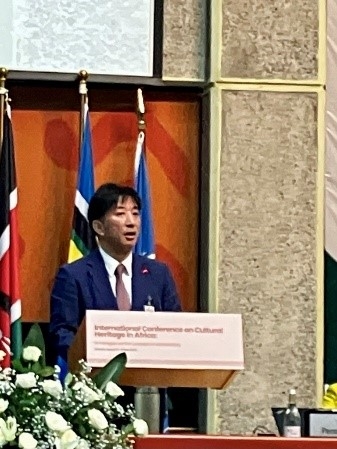
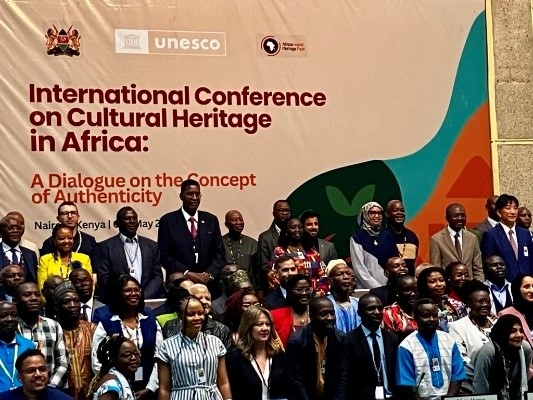
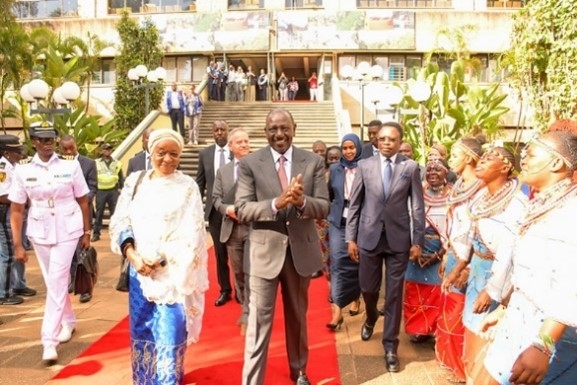
@UNON-ODG/Crystal Norman
Opening Speech by Ambassador Kano
On May 7, Ambassador Kano visited the Tombs of Buganda Kings at Kasubi in Uganda. Inscribed on the World Heritage List in 2001, the Kasubi Tombs suffered extensive damage due to a fire in March 2010 and were subsequently placed on the List of World Heritage in Danger. The Government of Japan, through the UNESCO-Japan Funds-in-Trust, supported reconstruction efforts and the development of risk management and fire prevention plans from 2013 to 2022. As a result, the tombs were successfully restored using traditional techniques, and their removal from the List of World Heritage in Danger was officially approved at the 2023 session of the World Heritage Committee.
During his visit, Ambassador Kano expressed his gratitude to all those involved in the restoration and praised the reconstruction of the tombs using traditional methods despite the adversity caused by the fire. He highlighted the achievement as a symbolic example of the resilience of the local community. He also noted that Japan has its own tradition of thatched-roof architecture and expressed his appreciation for the opportunity to exchange knowledge and experiences on the shared challenge of fire prevention.
The Government of Japan remains committed to contributing to the protection of cultural heritage around the world, including in Africa, through continued cooperation with UNESCO.
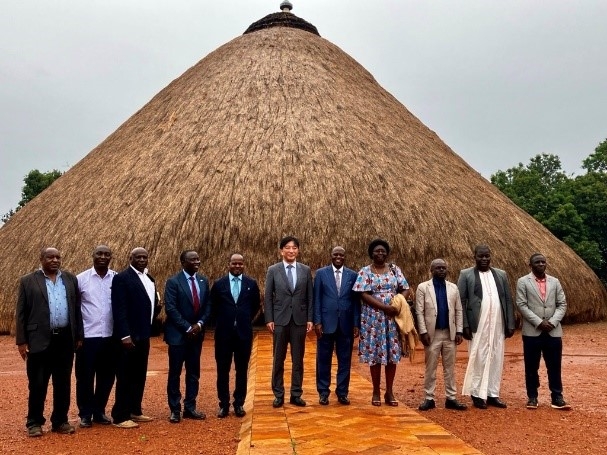
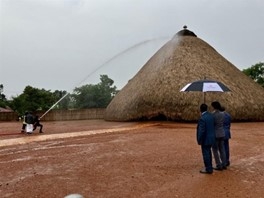
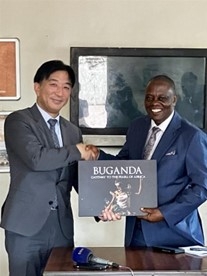
The conference brought together more than 400 participants, including government officials, researchers, site managers of cultural heritage, local community representatives, diplomats, and NGOs from across Africa and beyond. The event provided an opportunity to deepen understanding of the concepts of "authenticity" and "integrity" in cultural heritage through dialogue, as well as the theories and practices of its conservation. Japan supported the organization of the conference through the UNESCO-Japan Funds-in-Trust, its voluntary contribution to UNESCO.
In his opening remarks, Ambassador Kano shared Japan’s own experience in the 1990s when the country began preparing to nominate its cultural properties to the World Heritage List. At the time, Japan encountered challenges because its traditional methods of preserving wooden architecture did not fully align with the prevailing European model of “authenticity,” which was largely based on stone architecture. To address this, Japan initiated an international dialogue that led to the adoption of the Nara Document on Authenticity in 1994. Ambassador Kano expressed his hope that the conference would serve as a meaningful platform for sharing diverse knowledge and experiences and contribute to shaping a common vision for the future of cultural heritage protection in Africa and around the world.
At the closing ceremony held on 9 May, the conference's outcome document was presented by H.E. Mr Peter K. Ngure, Ambassador Extraordinary and Plenipotentiary, Permanent Delegate of Kenya to UNESCO, one of the key organizers of the event. H.E. Dr William Samoei Ruto, President of the Republic of Kenya, who attended the ceremony, expressed his expectations that the outcomes of the conference would play an important role in the future protection of cultural heritage.



@UNON-ODG/Crystal Norman
Opening Speech by Ambassador Kano
On May 7, Ambassador Kano visited the Tombs of Buganda Kings at Kasubi in Uganda. Inscribed on the World Heritage List in 2001, the Kasubi Tombs suffered extensive damage due to a fire in March 2010 and were subsequently placed on the List of World Heritage in Danger. The Government of Japan, through the UNESCO-Japan Funds-in-Trust, supported reconstruction efforts and the development of risk management and fire prevention plans from 2013 to 2022. As a result, the tombs were successfully restored using traditional techniques, and their removal from the List of World Heritage in Danger was officially approved at the 2023 session of the World Heritage Committee.
During his visit, Ambassador Kano expressed his gratitude to all those involved in the restoration and praised the reconstruction of the tombs using traditional methods despite the adversity caused by the fire. He highlighted the achievement as a symbolic example of the resilience of the local community. He also noted that Japan has its own tradition of thatched-roof architecture and expressed his appreciation for the opportunity to exchange knowledge and experiences on the shared challenge of fire prevention.
The Government of Japan remains committed to contributing to the protection of cultural heritage around the world, including in Africa, through continued cooperation with UNESCO.



